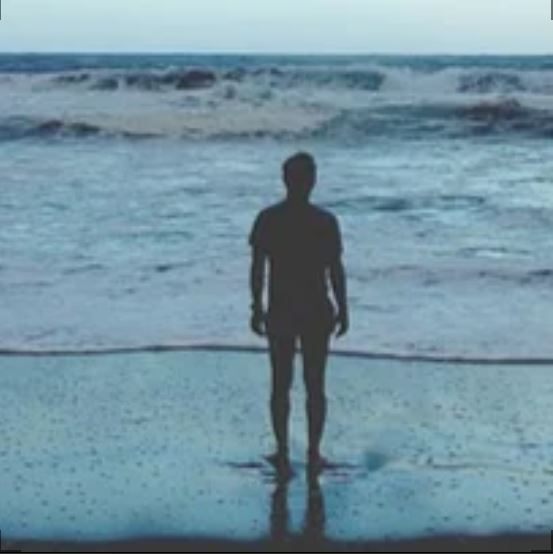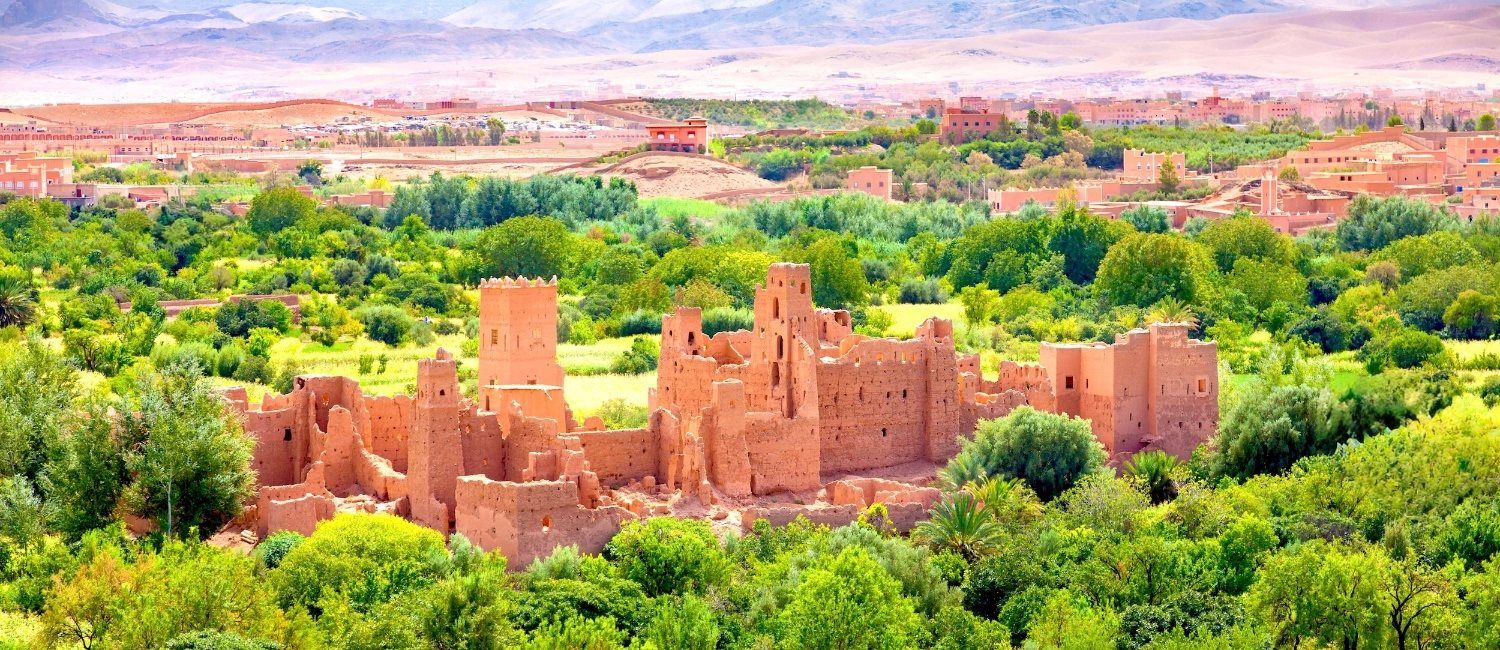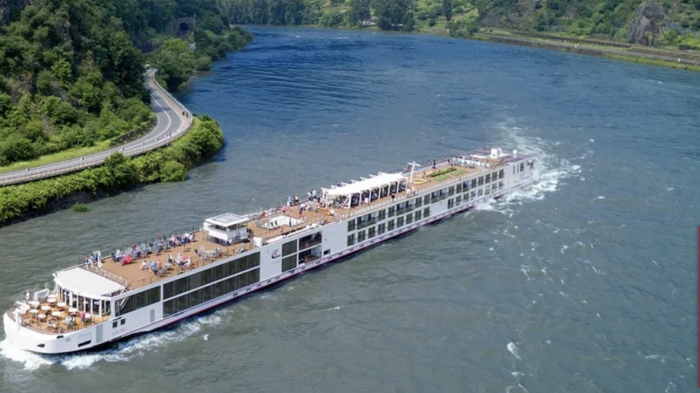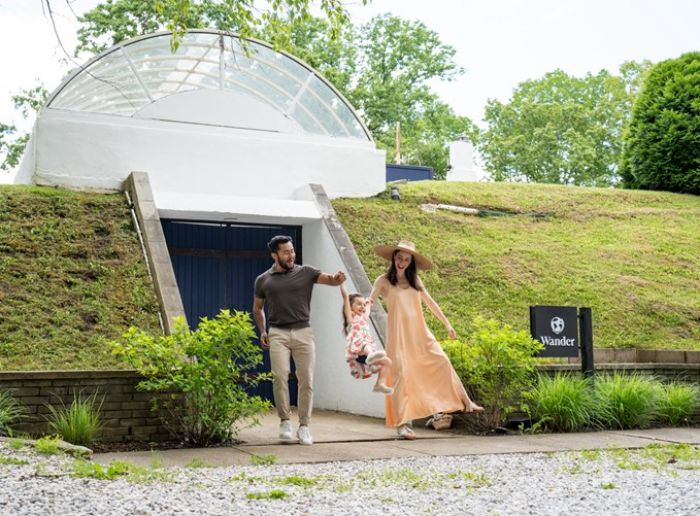Montenegro’s Rising Star: The Chedi at Luštica Bay
Luxury travel has entered its age of oversaturation. Once-rare enclaves now exist in a near-constant state of exposure—filtered, tagged, and reposted until their allure begins to dull. What was once discreet has become performative. And so, the truly discerning traveler begins to look elsewhere—not for extravagance, but for atmosphere; not for hype, but for hush.
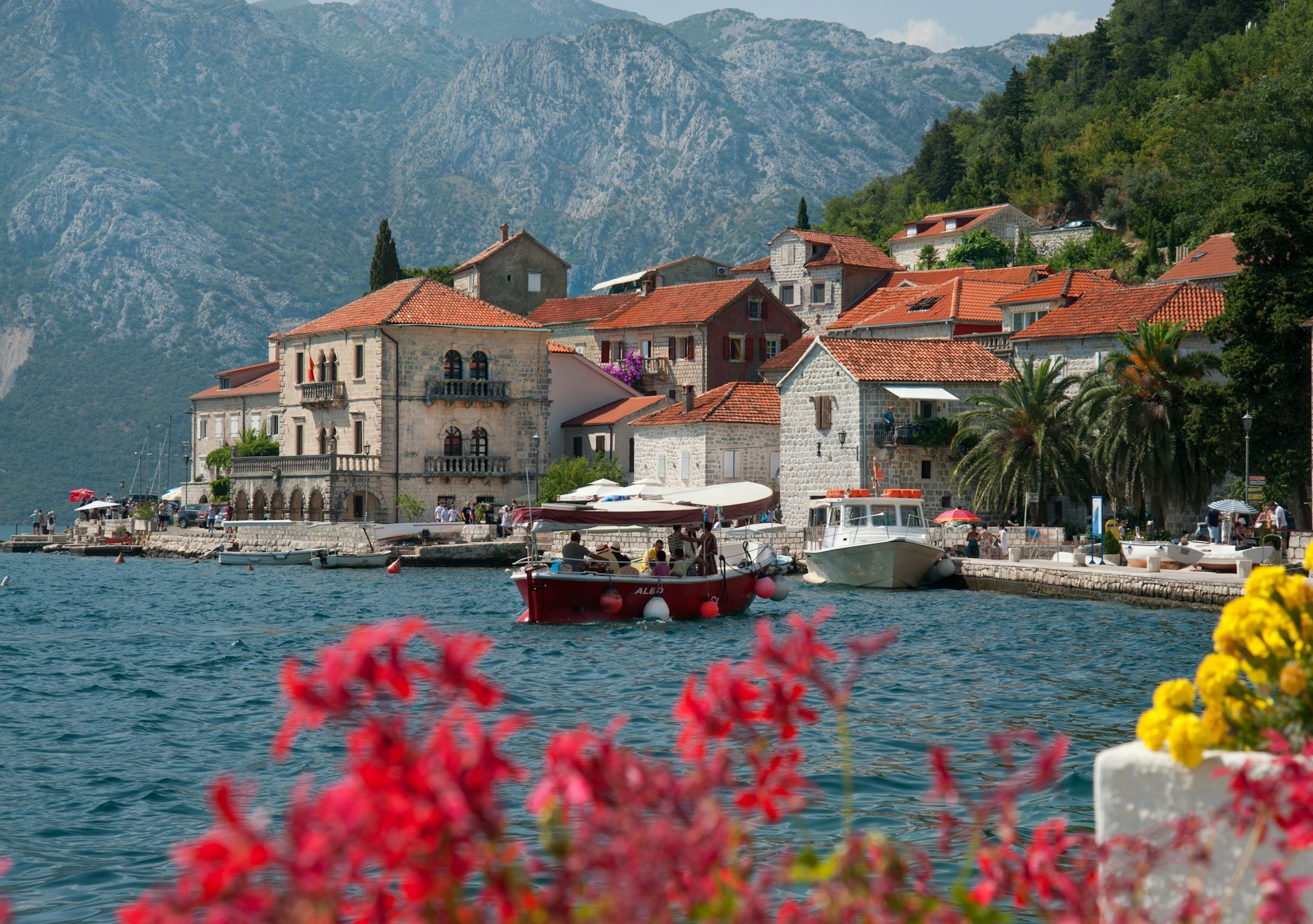
Enter Montenegro. A destination that, until recently, seemed content to remain just beyond the frame. While the Côte d’Azur, Ibiza, and Mykonos have long battled the deluge of digital voyeurism, this small Adriatic nation has emerged—quietly but confidently—as a kind of antidote.

It offers not anonymity, but a cultivated form of privacy, where Montenegro’s unspoiled landscapes provide a quiet retreat, allowing guests to immerse in luxury without intrusion. It’s not about spectacle, but substance, with experiences grounded in authenticity and heritage. There’s a restraint to its luxury, an elegance that doesn’t flaunt, but instead lets Montenegro’s natural beauty and rich culture speak for itself.
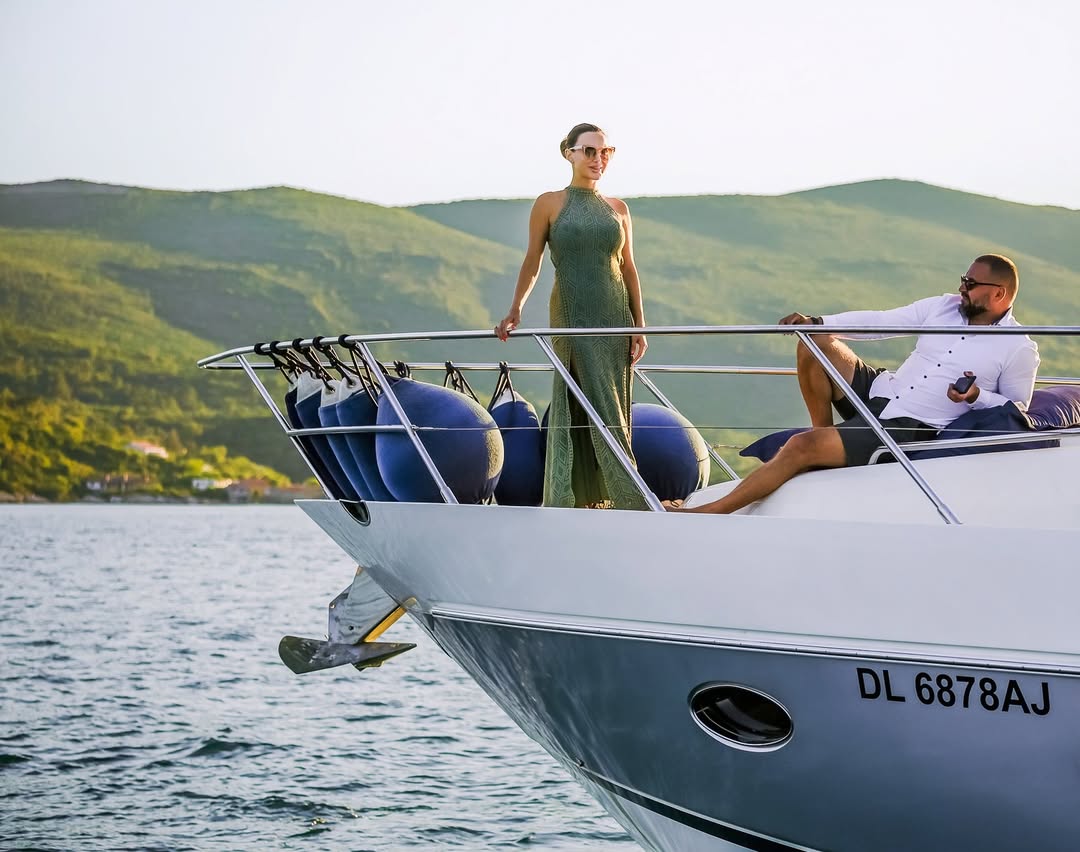
It wasn’t always this way. For years, Montenegro was more suggestion than certainty—a murmur among the yachting crowd, a scenic detour en route to better-known ports. But over the last decade, the country has redefined its narrative, transforming from a post-socialist outlier into one of Europe’s most intriguing new sanctuaries for those who don’t need to be told where to go next.
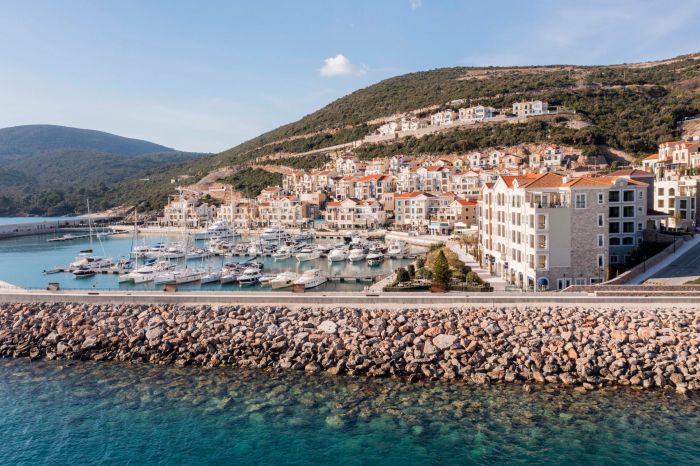
Nowhere is that shift more evident than in Luštica Bay and its centerpiece, the Chedi.
Montenegro
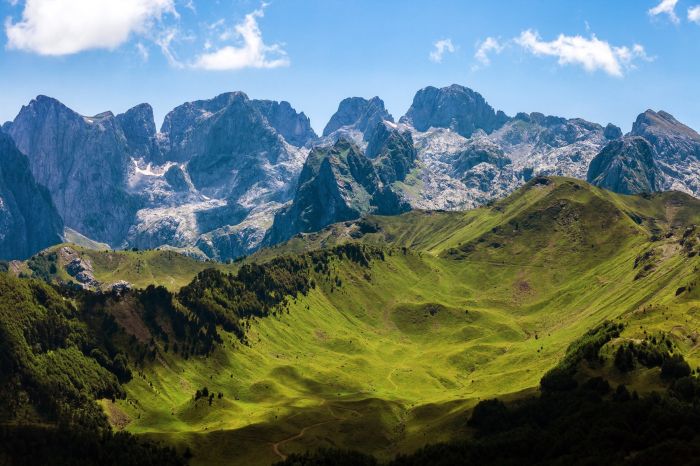
Its name—Crna Gora, or Black Mountain—draws from the dark limestone peaks that plunge into the Adriatic like a sleeping colossus, their edges softened only by the sea’s endless negotiation with the land.
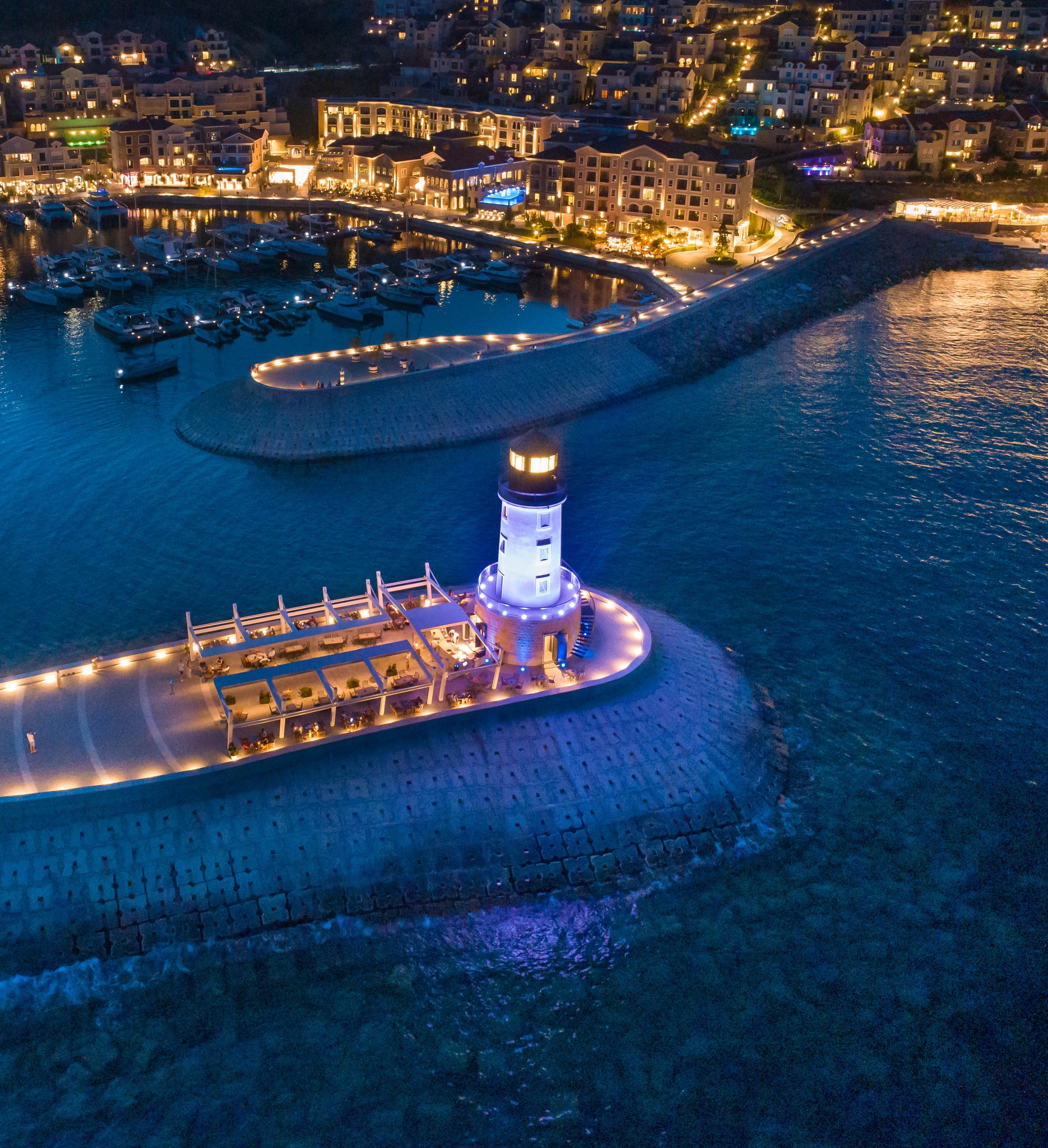
Montenegro is quickly becoming a thinking person’s alternative to Saint-Tropez. The yachts are still here, the sea still sparkles, and yes, there are fine restaurants and boutiques with well-curated price tags. But the difference is in the energy. There’s an ease here—a lack of performance. Montenegro doesn’t demand to be seen. It simply is.
A New Riviera
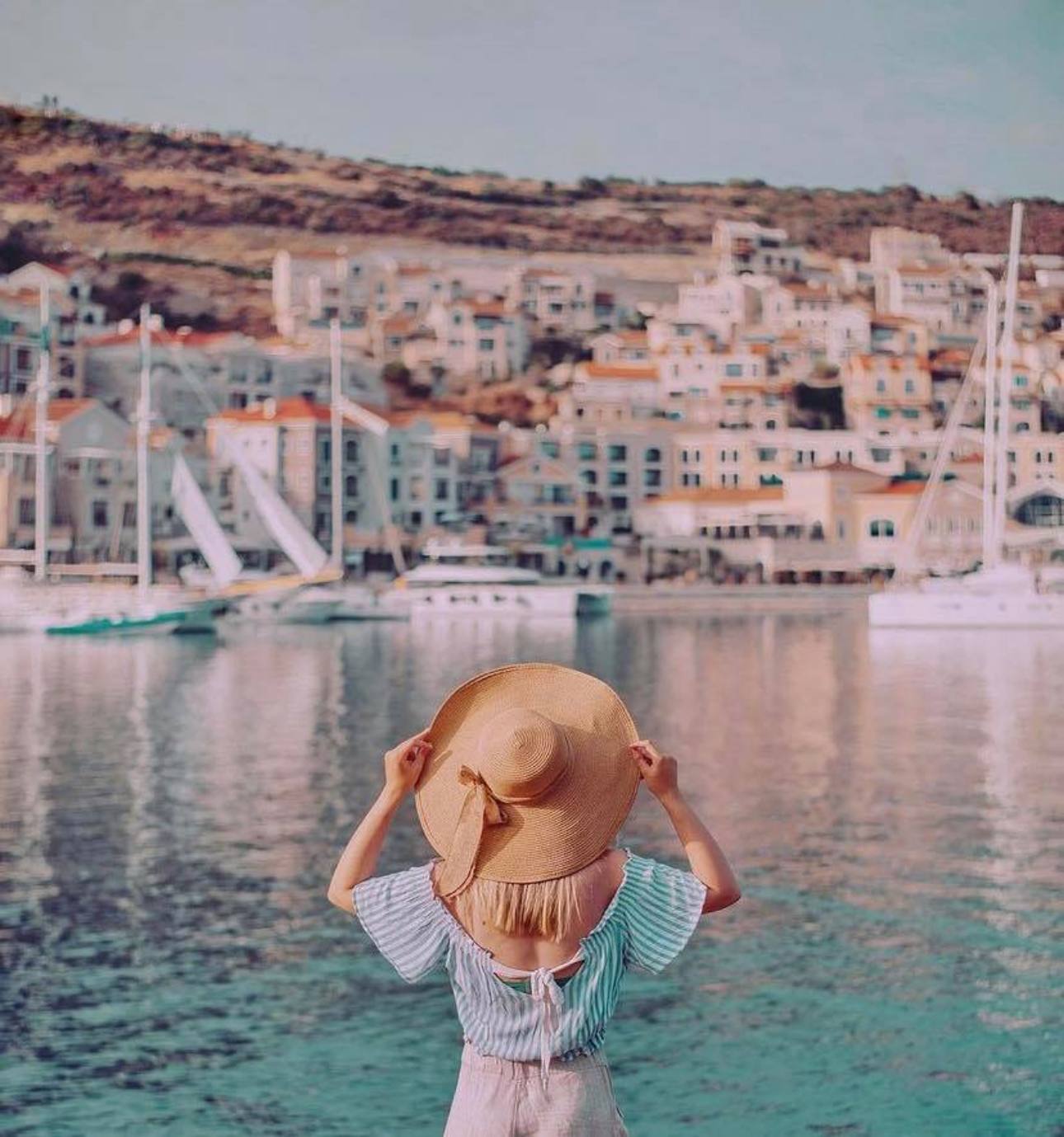
Three marquee marina developments now shape the country’s luxury profile: Porto Montenegro in Tivat, slick with superyacht sheen; Portonovi, just across the bay with its own One&Only and a soft-touch glamour; and the most ambitious of all—Luštica Bay.
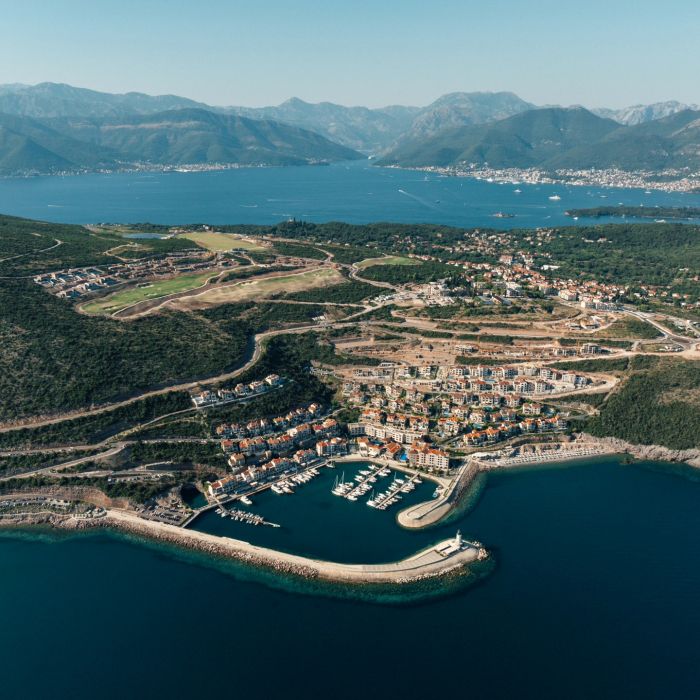
Luštica isn’t just a marina. It’s a new city by the sea. A €1.1 billion masterplan set along the rugged Luštica Peninsula, envisioned to unfold organically into a full-fledged coastal town—complete with residential neighborhoods, a school, with a central piazza.

Luštica will be home to Montenegro’s first 18-hole golf course, designed by Gary Player. Perched high above the Adriatic, its fairways trace the land’s natural contours, offering panoramic views that sweep from jagged limestone peaks to the deep cobalt of the coastline below—vistas so arresting they can stall a swing mid-backswing.
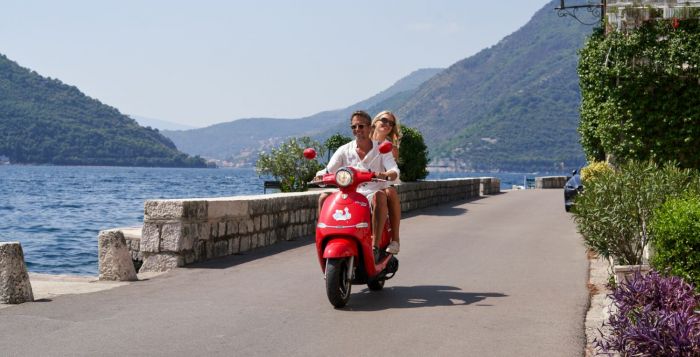
The coastal roads eventually open onto Luštica Bay, where a crescent-shaped marina village curves gently around the water where a working lighthouse marks the harbor’s edge. Along the promenade, whitewashed stone buildings rise in tidy, deliberate tiers, built with local materials and traditional forms—stone facades, terra cotta roofs, wooden shutters—to mirror the older coastal settlements of Montenegro.
The Marina and Beyond
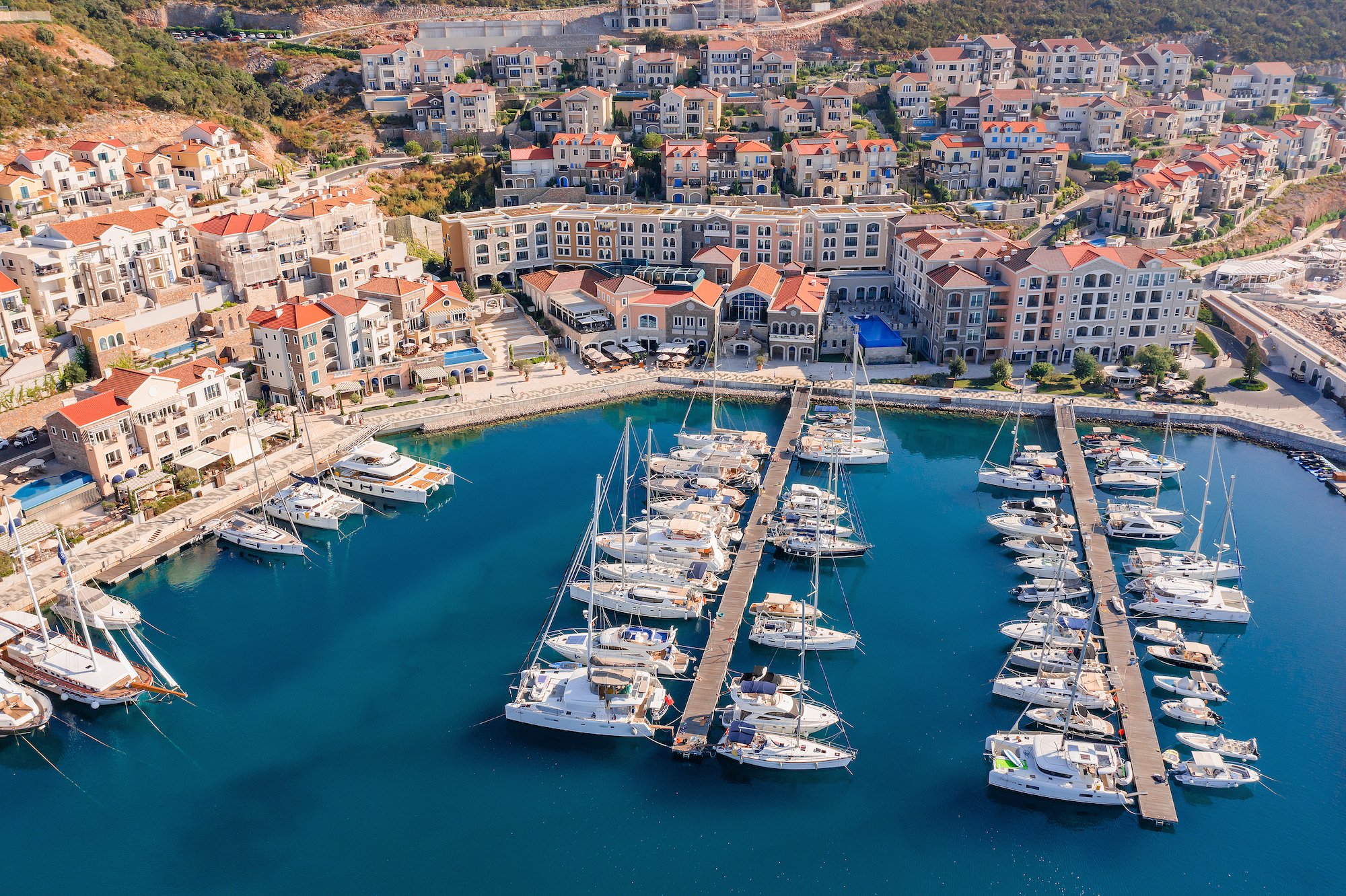
This is not a marina built for the masses. It’s sized to feel intimate, with space for superyachts but also room for smaller sailing vessels. The vibe is international, but low-key. At dusk, the boardwalk glows gold with lantern light and the hum of clinking glasses. Locals and long-term residents mix with transient yacht crews and holidaymakers. The boutiques tend toward the niche: curated resortwear, design-forward home goods, and local skincare lines you won’t find online.
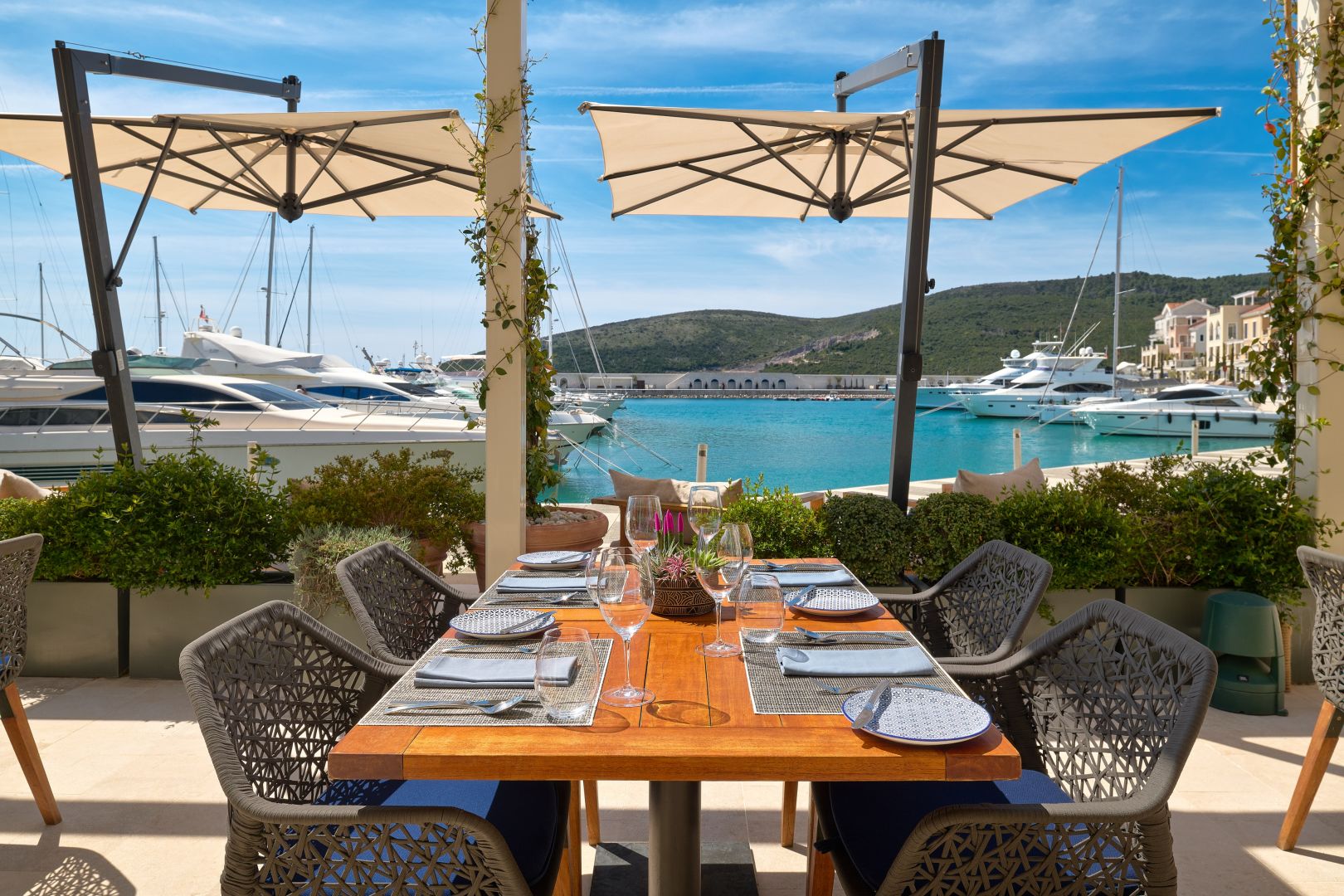
Restaurants and cafés stretch along the waterfront, offering a mix of Mediterranean flavors, seafood caught just offshore, and casual local dishes. Terraces spill onto the promenade, shaded by wide umbrellas and framed by the low hum of conversation and the clink of glassware. Boutiques are tucked between the dining spots, selling light summer clothing, handmade jewelry, and simple home goods that reflect the coastal setting.
The village feels carefully considered, designed to encourage a slower pace, where days slip easily from coffee to a long lunch to a quiet evening by the water. It carries an easy confidence—lively enough to feel vibrant, but never crowded or overly polished.
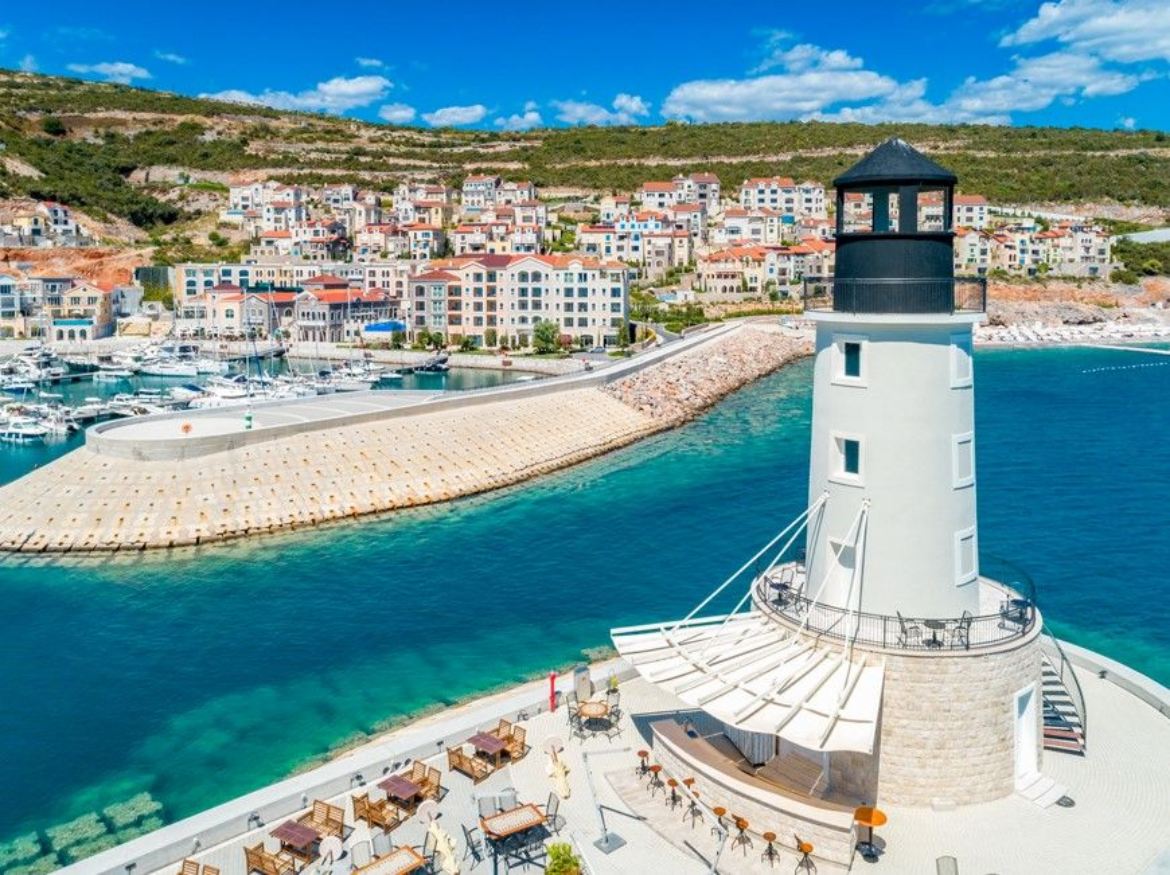
The lighthouse marks the point where land concedes to water, standing at the far edge of the village with its clean white tower and weathered stone base. In summer, a small café at its foot becomes a quiet gathering spot—offering coffee, cold drinks, and a shaded place to sit and watch the marina unfold into the open Adriatic. The design around the lighthouse feels deliberately spare, giving way to long, uninterrupted views: the shimmer of boats moving in and out of the harbor, the low, undulating coastline stretching into the distance, and, on clear days, the faint outline of Lovcen’s peaks in the background.
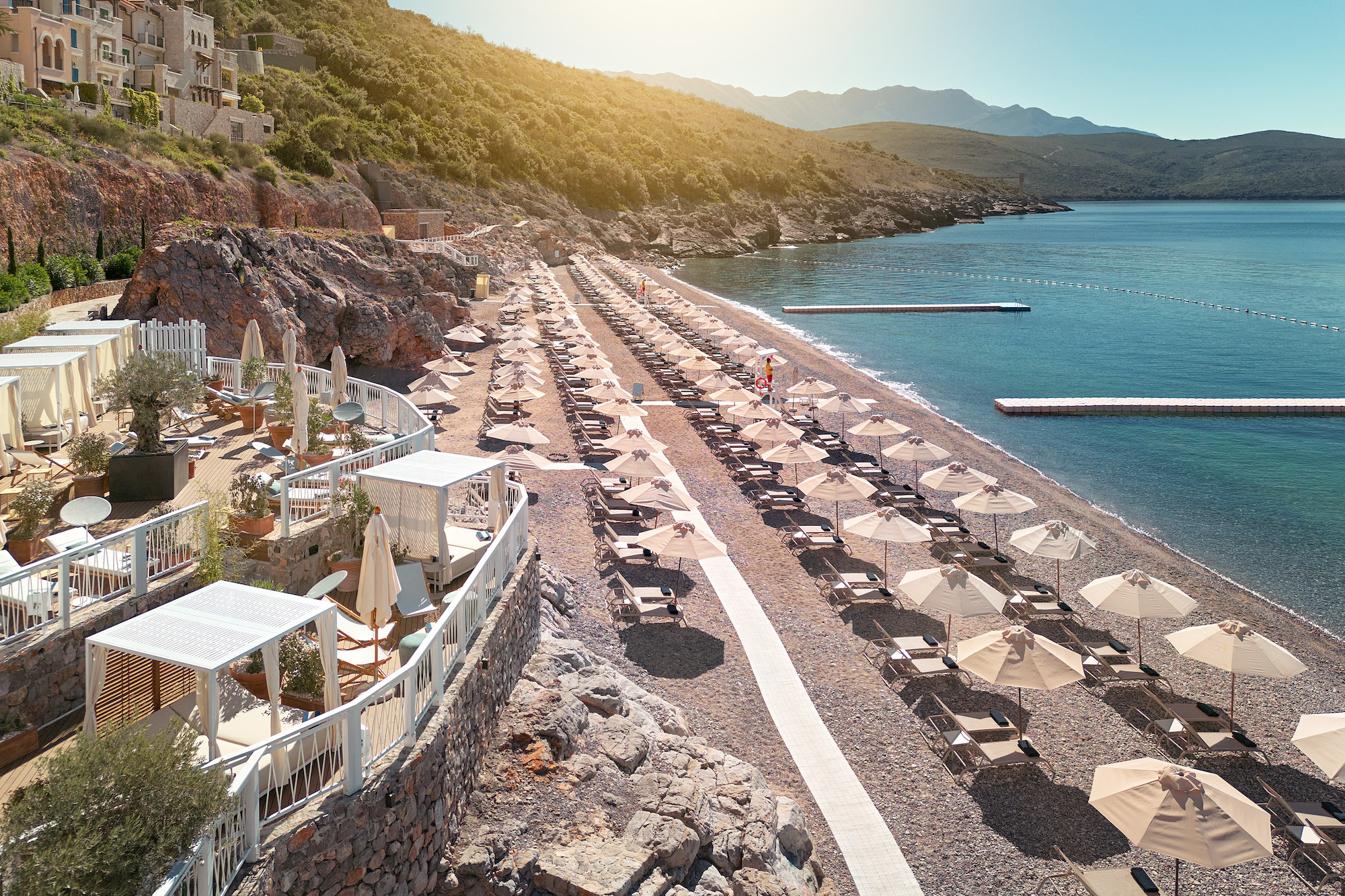
Just across the waters, the Beach Club becomes the epicenter of summer social life. Set against a sweep of white stone and pale sand, it’s laid out with rows of low-slung daybeds draped in cream linen, shaded by crisp parasols. Waitstaff move with practiced ease, serving chilled bottles of rosé and seafood platters without breaking the flow of the afternoon.
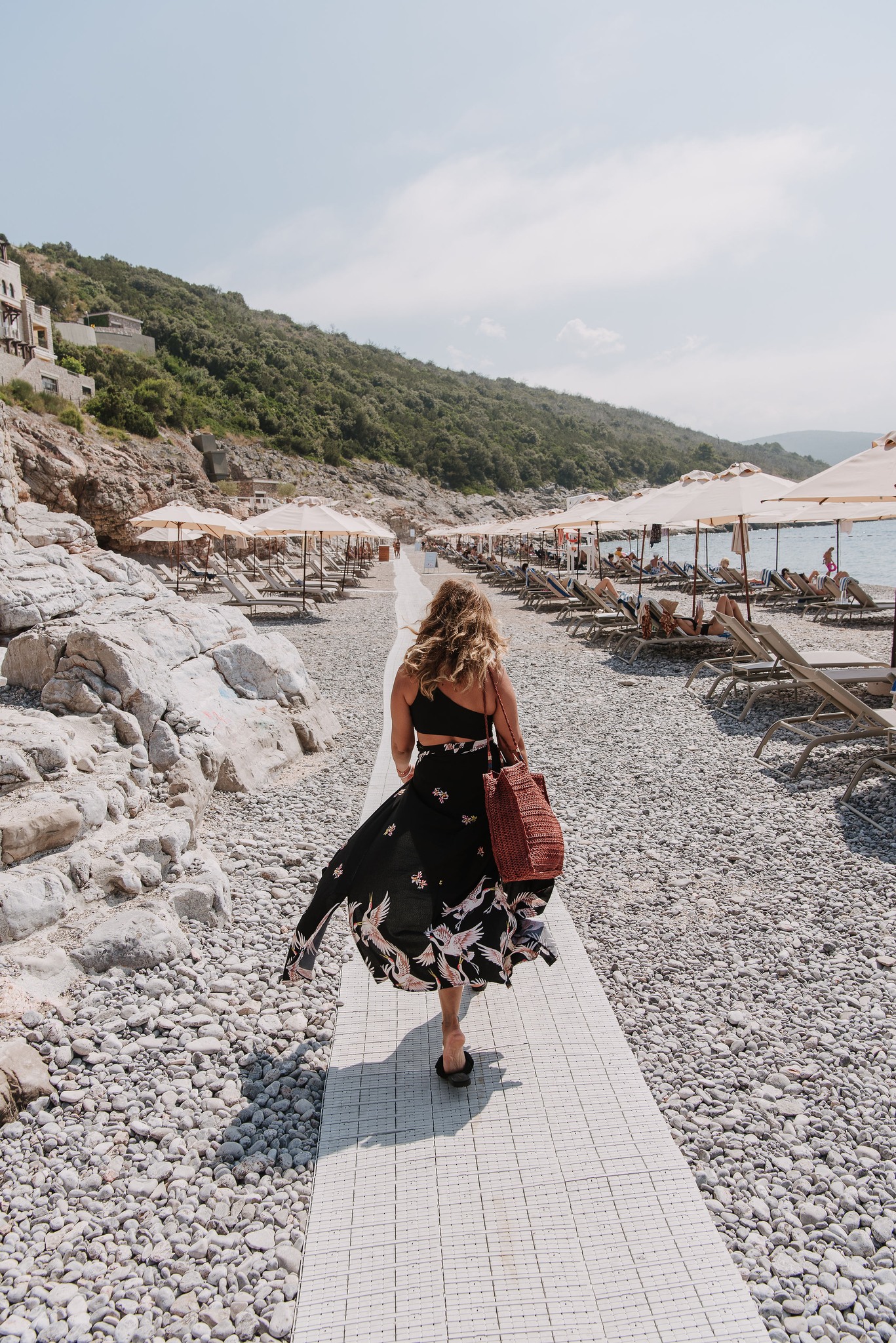
A DJ sets the pace from a discreet booth, keeping the music relaxed and textured—never crowding the moment, just threading a soft energy through the air. The mood is effortlessly dialed-in: sociable but never frantic, luxurious without show. As the afternoon stretches toward sunset, the light softens and the Beach Club takes on a looser, golden glow, the kind of atmosphere that makes hours slip past unnoticed.
The Chedi: Anchoring Elegance
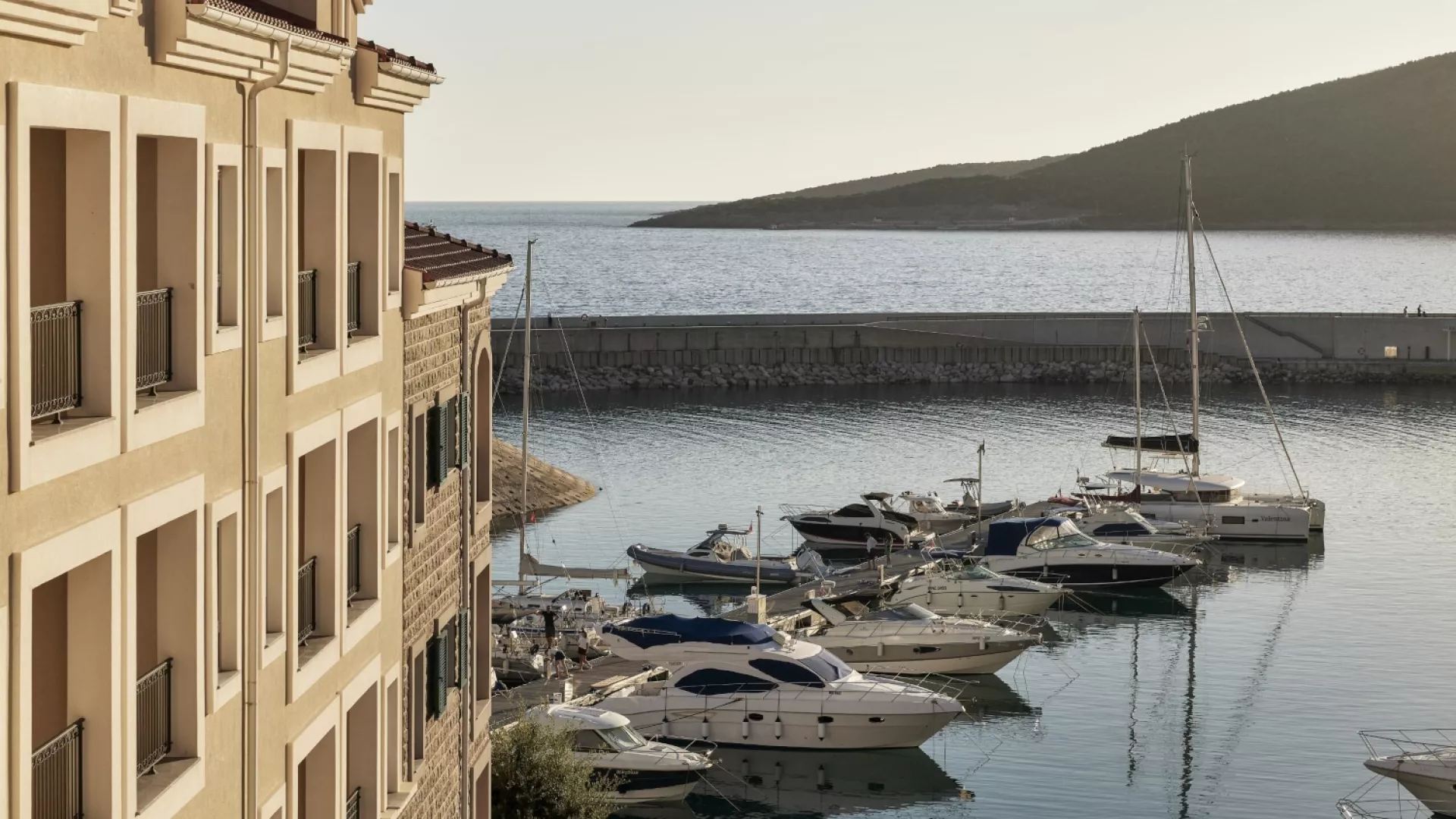
Set directly along the marina, The Chedi is Luštica Bay’s quiet crown jewel. The design is a study in restraint: a palette drawn from its surroundings, clean silhouettes, and no unnecessary flourishes.
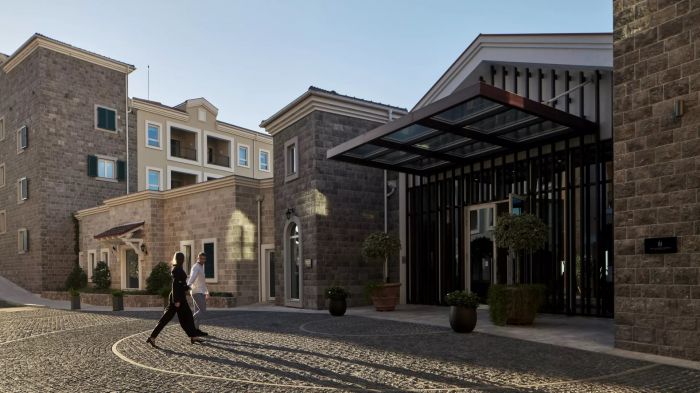
From the outside, The Chedi could pass for a reimagined coastal village, with interconnected buildings in honeyed stone and sea-facing balconies. Step inside and you’ll find the tone shifts—cool marble, pale wood, and glass that blurs the boundary between interior and horizon.
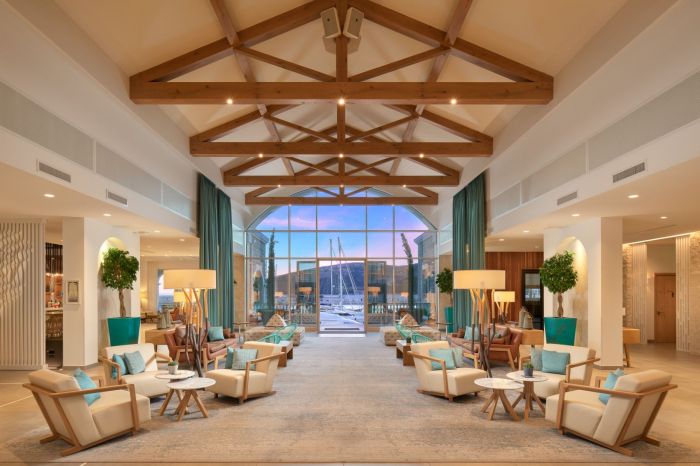
The common areas unfold like a private club that just happens to be open to guests. The indoor-outdoor restaurant extends directly onto the marina promenade, where cushioned armchairs catch both the sun and conversation.
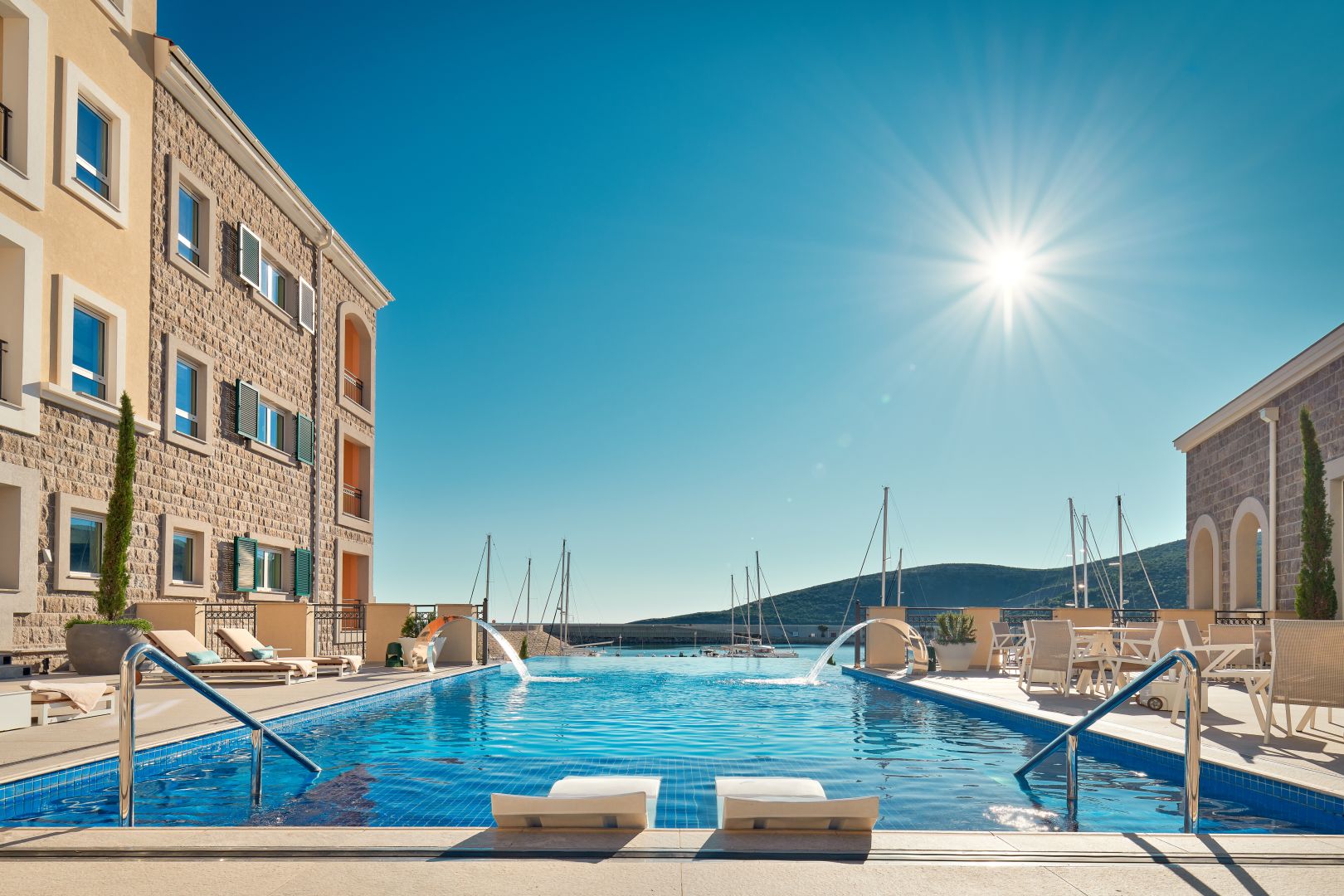
The infinity pool is sculptural, tiered over the sea, with loungers that spill onto a terraced sun deck. In the evenings, it becomes almost cinematic—moody lighting, water lapping below, and a sky that fades from tangerine to velvet.
Rooms with a View
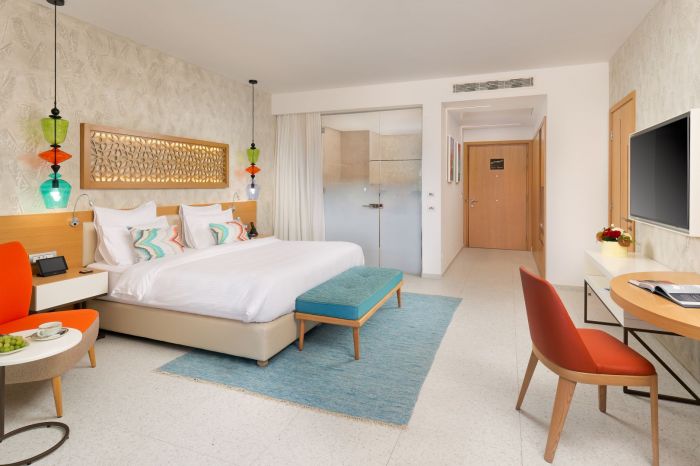
The accommodations—111 rooms and suites—are designed to feel more like personal residences than hotel rooms. Even the entry-level rooms have sea views and generous terraces. The higher categories elevate things considerably: large living areas, soaking tubs with Adriatic views, and thoughtful touches like walk-in closets and in-room espresso bars.
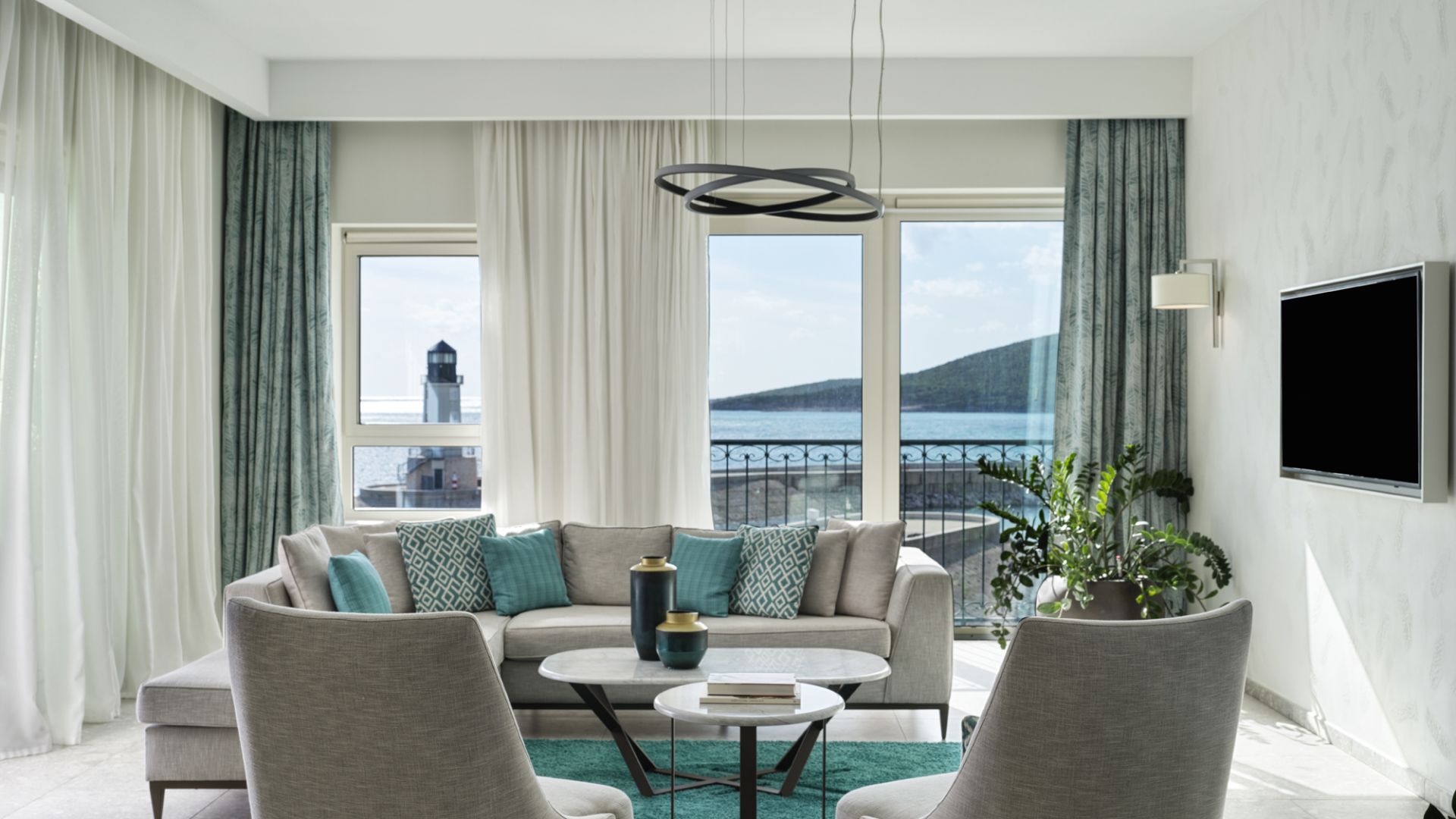
The standout is the Penthouse Suite—a retreat that reads more pied-à-terre than hotel accommodation. Its wraparound terrace holds an outdoor dining table, private Jacuzzi, and panoramic views that swing from mountain to marina. Inside, interiors are kept pared back to let the light and landscape do the heavy lifting.
Gastronomy at the Edge of the Adriatic
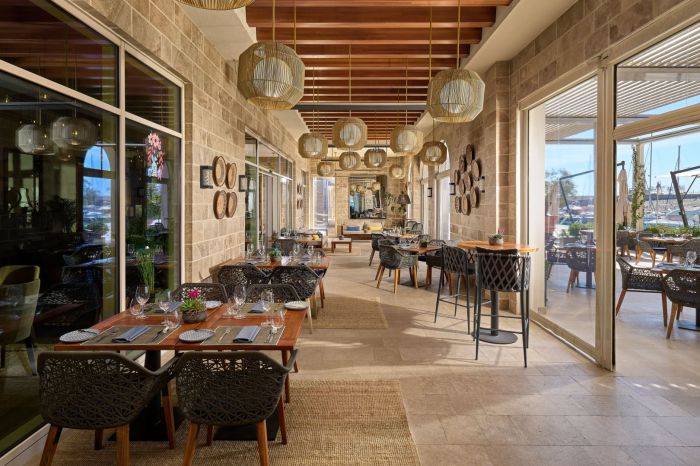
Dining at The Chedi begins with breakfast—an elaborate but elegant spread of just-baked breads, Montenegrin cheeses, locally smoked meats, and made-to-order eggs beneath copper heat lamps. Come evening, The Spot (the more relaxed of the hotel’s dining options) serves seasonal Adriatic fare: grilled calamari with lemon oil, wild sea bass with fennel and saffron, hand-rolled pasta dressed simply in clams and white wine.

The fine dining restaurant, The Restaurant—yes, they went minimalist on the name—leans into modern Mediterranean. Expect foie gras with fig compote, slow-cooked lamb shoulder with pomegranate jus, and tasting menus that feel indulgent without the theatre. The wine list is precise and confident, spotlighting Montenegro’s underrated varietals alongside Old World staples.
Spa & Indoor Wellness
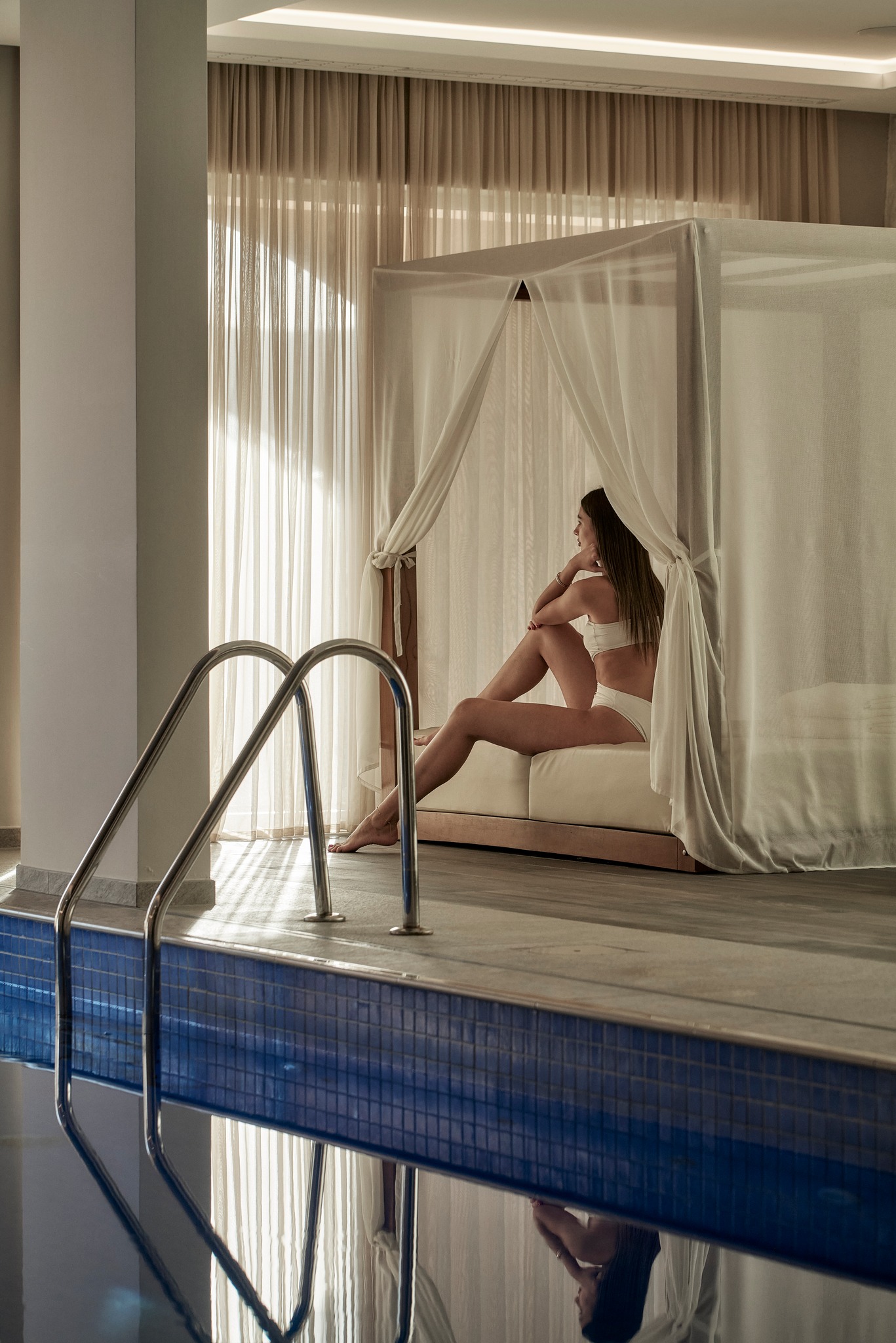
The Chedi’s wellness offerings aren’t secondary—they’re integral. The spa menu is rooted in regional traditions: Montenegrin salt scrubs, seaweed wraps, and lavender oil sourced from nearby hills. There’s a hammam, a sauna with views to the sea, and an indoor heated pool tiled in a palette of deep green and sand. Even here, there’s no sensory overload—just calming tones, expert therapists, and quiet.
What makes Montenegro so special?
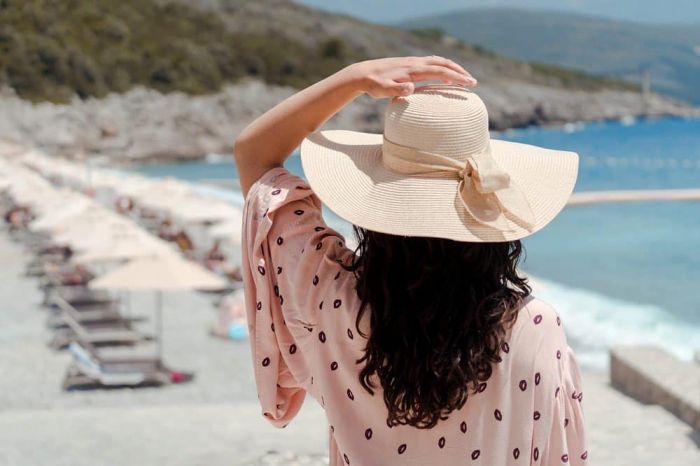
In an era when travel often feels like a performance, Montenegro is one of the few destinations that still offers the illusion of discovery. The Chedi Luštica Bay is the punctuation mark on Montenegro’s transformation from obscurity to elegance. Together, they make a compelling case for a new Mediterranean—a little wilder, a little quieter, and infinitely more refined.








